Dino Lanaro (1909 - 1998) was an Italian painter of the Corrente de Vita movement started in Milan as a counterpoint to nationalistic Futurism and the Novecento Italiano movements. He often painted bright landscapes with houses.

Dino Lanaro (1909 - 1998) was an Italian painter of the Corrente de Vita movement started in Milan as a counterpoint to nationalistic Futurism and the Novecento Italiano movements. He often painted bright landscapes with houses.

Dino was born in Malo in the province of Vicenza. By the age of 15, he had to work adding tint and color to prints for a publishing house, where he learned typography and lithography. He briefly served in the army during the first world war, but moved to Padua where he met other artists. In 1931, he exhibited that year with Antonio Morato, Dino Lazzaro, and Luigi Strazzabosco at the Mostra Internazionale di Arte Sacra in Padua. In 1937, he moved to Milan, where he would join the Corrente Movement, befriending Renato Birolli, and exhibiting with the group at the Galleria on Via Spiga.
After the war, he participated in the Venice Biennale of 1948, 1950, and 1956; and at the Quadriennali of Rome in 1947, 1951, 1959, and 1965. In Milan, he was nominated as an instructor of painting for the Brera Academy. In 1971, he visited Minnesota for an exhibition. Some of his works are exhibited at the Galleria d’Arte moderna (GAM) di Milano and in the Museums of La Spezia, Gallarate, Alessandria, Museo Castelvecchio a Verona, and Castello del Buonconsiglio di Trento. In 1984, a retrospective was held in Schio of his works.
He died in Milan. [1]
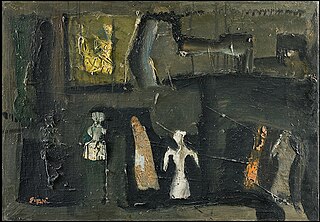
Mario Sironi was an Italian Modernist artist who was active as a painter, sculptor, illustrator, and designer. His typically somber paintings are characterized by massive, immobile forms.
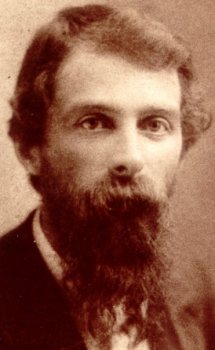
Giuseppe Pellizza da Volpedo was an Italian Divisionist painter. Pellizza was a pupil of Pio Sanquirico. He used a Divisionist technique in which a painting is created by juxtaposing small dots of paint according to a specific colour theory. Although he exhibited often, his work achieved popularity in death through their reproduction in socialist magazines and the acclaim they received from 20th-century art critics.
Trento Longaretti was an Italian painter. He studied at the Brera Academy in the 1930s, where he was taught by renowned artists, including painters Aldo Carpi and Pompeo Borra, and sculptors Francesco Messina and Marino Marini. He stated that painting is an "elixir for long life", and continued to paint and exhibit as a centenarian.
Tullio Crali was a Dalmatian Italian artist associated with Futurism. A self-taught painter, he was a late adherent to the movement, not joining until 1929. He is noted for realistic paintings that combine "speed, aerial mechanisation and the mechanics of aerial warfare", though in a long career he painted in other styles as well.
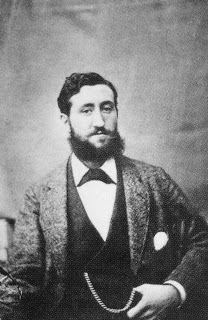
Serafino De Tivoli was an Italian painter of the Macchiaioli group, often referred to as "the father of the macchia" in recognition of his crucial influence on the group's innovative technique.

Emilio Longoni was an Italian painter.

Michele Cascella was an Italian artist. Primarily known for his oil paintings and watercolours, he also worked in ceramics, lithography, and textiles. He exhibited regularly at the Venice Biennale from 1924 until 1942, and his works are owned by major museums in Italy and Europe, including Victoria and Albert Museum in London, Galerie nationale du Jeu de Paume in Paris, and Galleria Nazionale d'Arte Moderna in Rome.
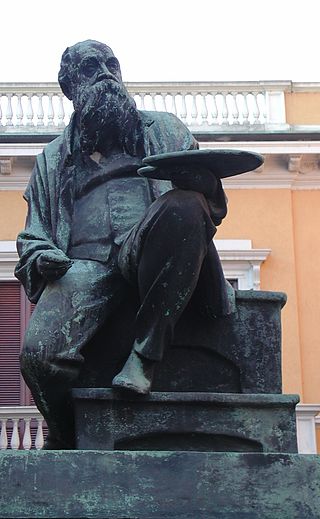
Mosè Bianchi (1840–1904) was an Italian painter and printmaker.

Raffaele De Grada was an Italian painter.

Leonardo Dudreville was a Venetian-born Italian painter. He was one of the founders of the Nuove Tendenze as well as of Novecento Italiano art movements.

Guido Farina (1896–1957) was an Italian painter.

The Galleria d'Arte Moderna is a modern art museum in Milan, in Lombardy in northern Italy. It is housed in the Villa Reale, at Via Palestro 16, opposite the Giardini Pubblici Indro Montanelli. The collection consists largely of Italian and European works from the eighteenth to the twentieth centuries.
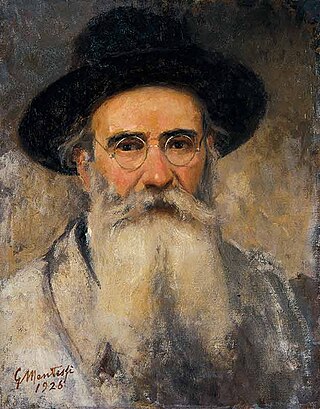
Giuseppe Mentessi was an Italian landscape and veduta painter.
Marina Apollonio is an Italian painter and optical artist. She lives and works in Padua.
Ernesto Treccani was a visual artist, writer and political activist.
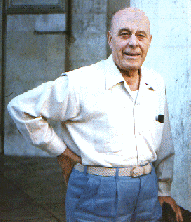
Domenico Cantatore was an Italian painter, mosaic artist and illustrator. His style, somewhat naive, is influenced by Cezanne, Matisse, and the Expressionists. His main focus was portraiture and the exploration of historical themes, in particular the figure of the reclining odalisques.

Giuseppe Migneco (1908–1997) was an Italian painter of the Novecento Italiano. He often painted scenes of laborers at work in a naïve and expressionist style.

The Museo Arte Gallarate (MAGA) is a museum of modern and contemporary art in Gallarate, in the province of Varese in Lombardy in northern Italy. It was founded in 1966 as the Civica Galleria d'Arte Moderna di Gallarate to house works purchased from, and donated by, artists participating in the Premio Gallarate, a national art competition. It was renamed in 2010 and moved to a new building. The museum holds over 5000 works and the collection includes paintings, drawings, sculptures, graphic design works, photographs, and installations by artists including Carlo Carrà, Loris Cecchini, Gianni Colombo, Lucio Fontana, Ennio Morlotti, Bruno Munari and Studio Azzurro. Between 2015 and 2017 Museo MAGA had a second venue in the Palazzo Leone Da Perego, in Legnano, some 15 km to the south-east of Gallarate.

Vito Bongiorno is an Italian artist known for making art out of charcoal.